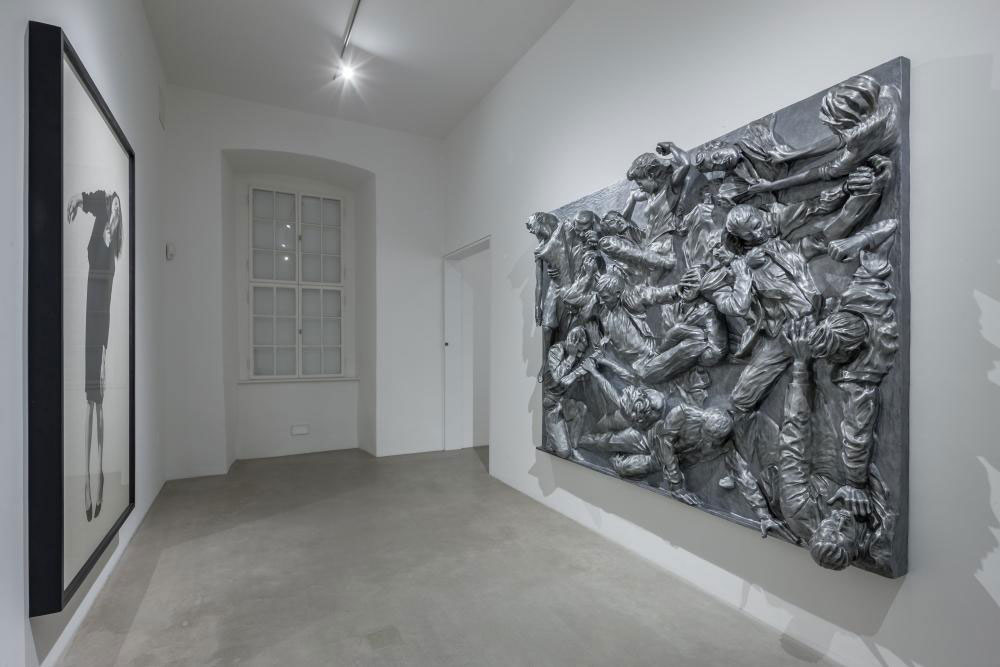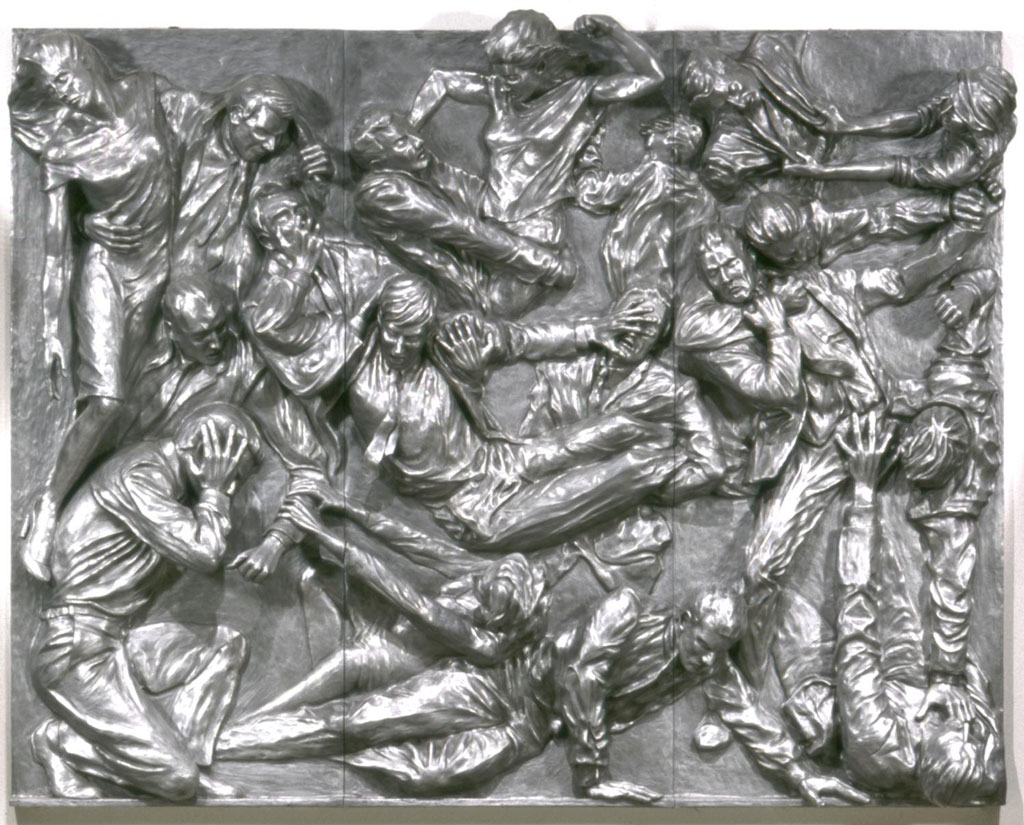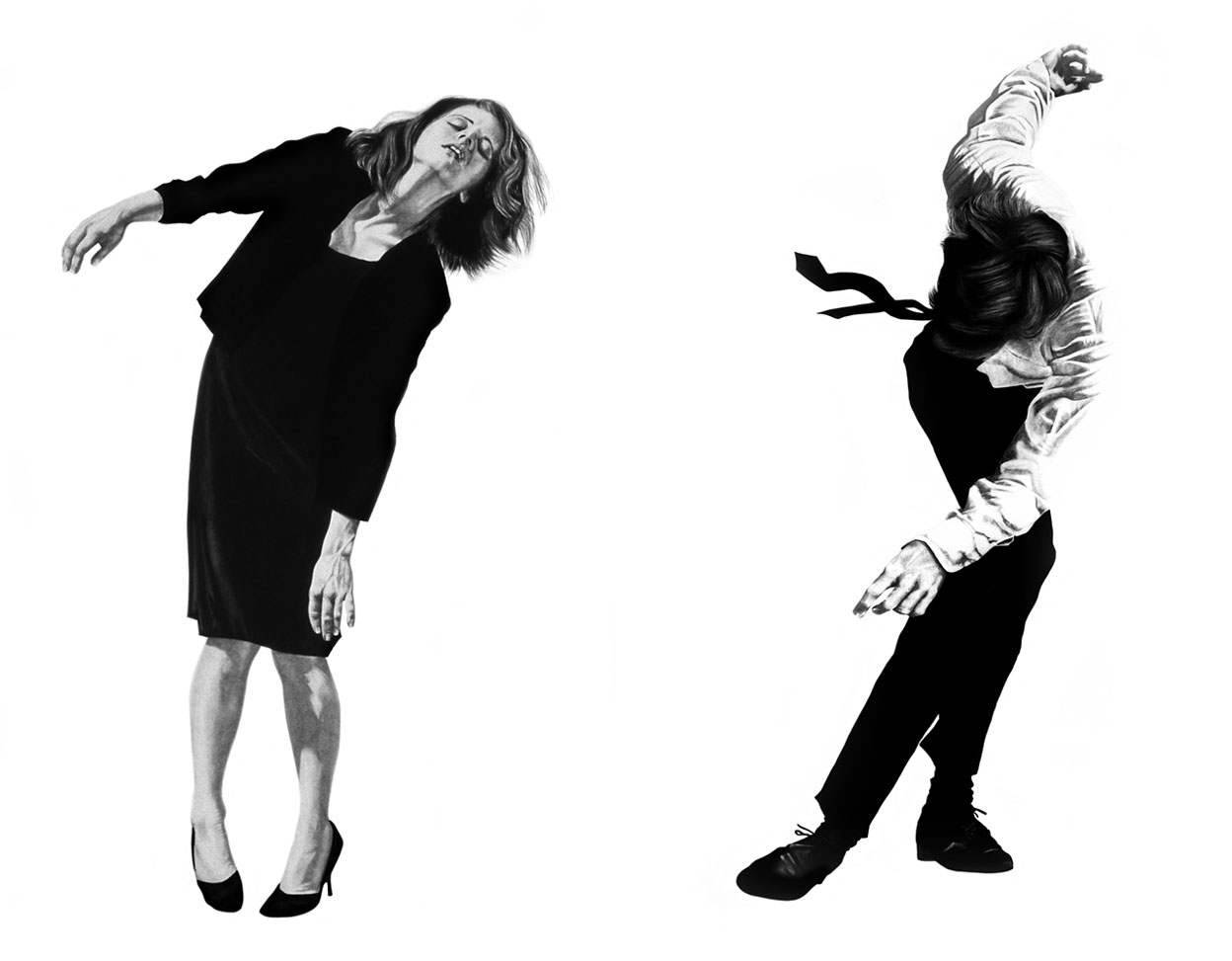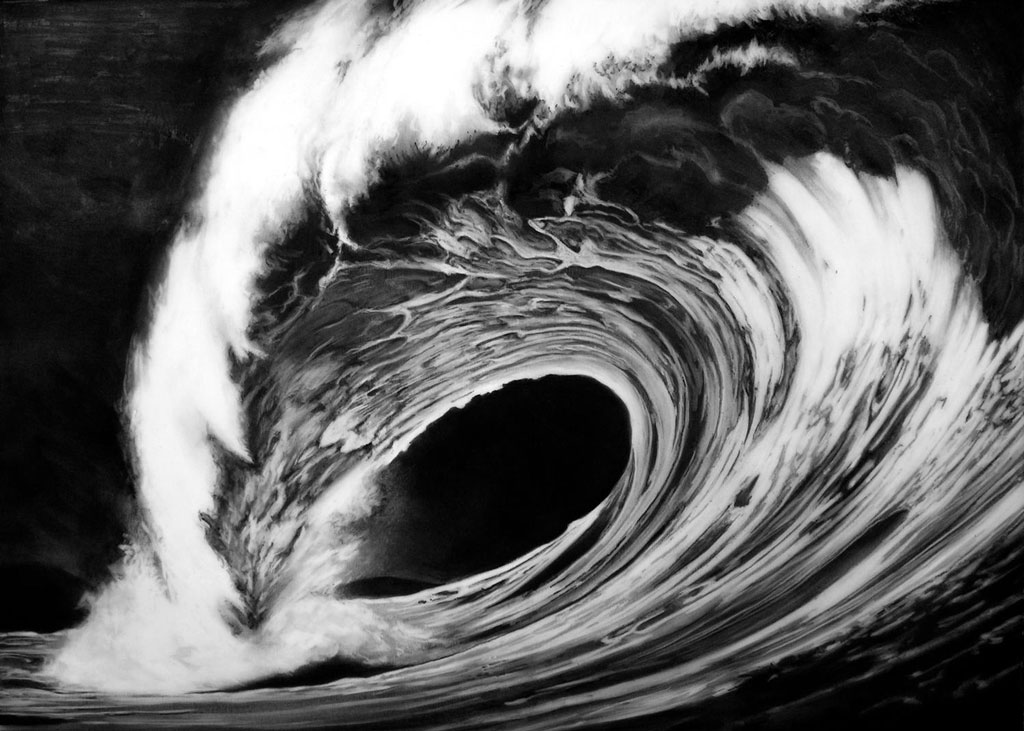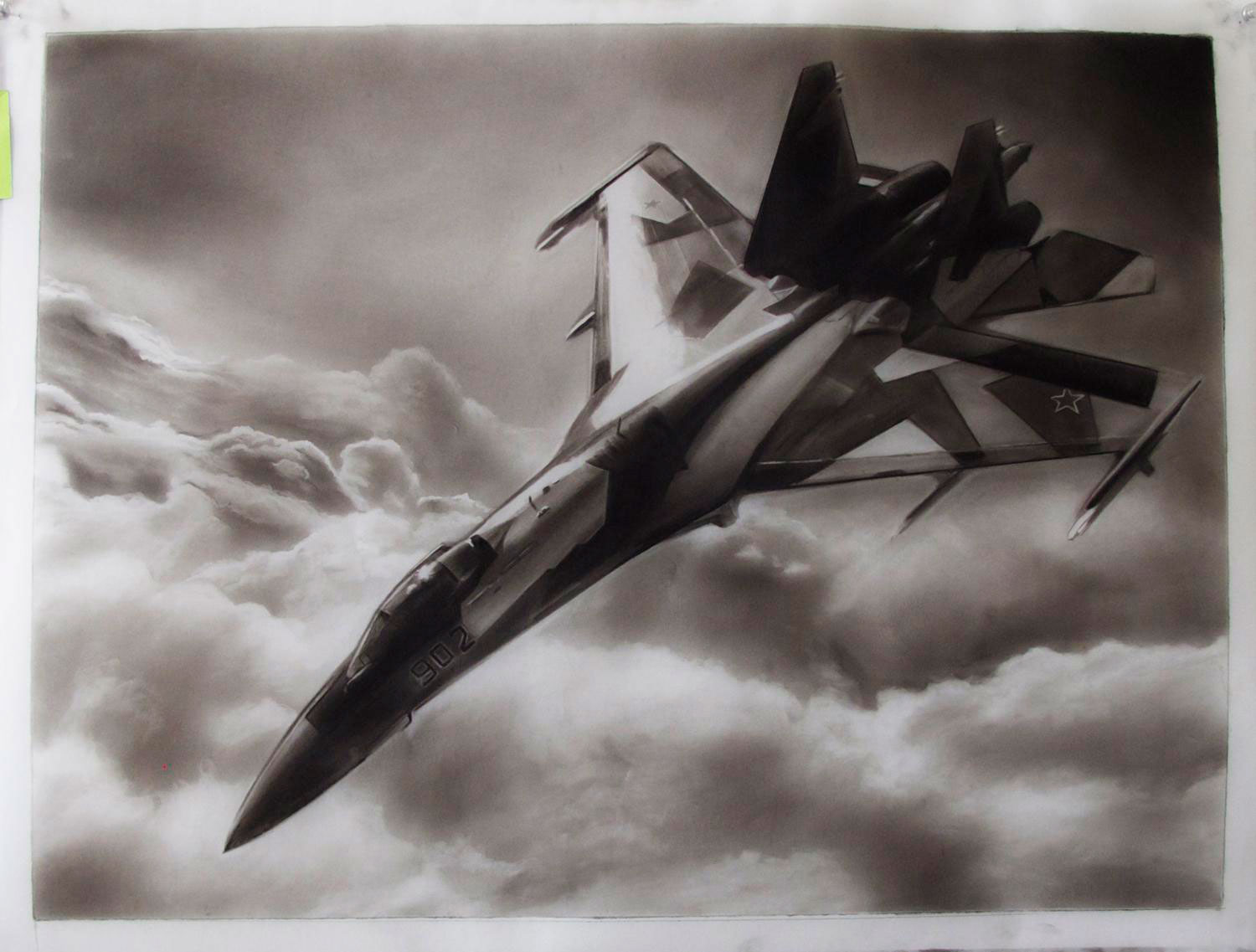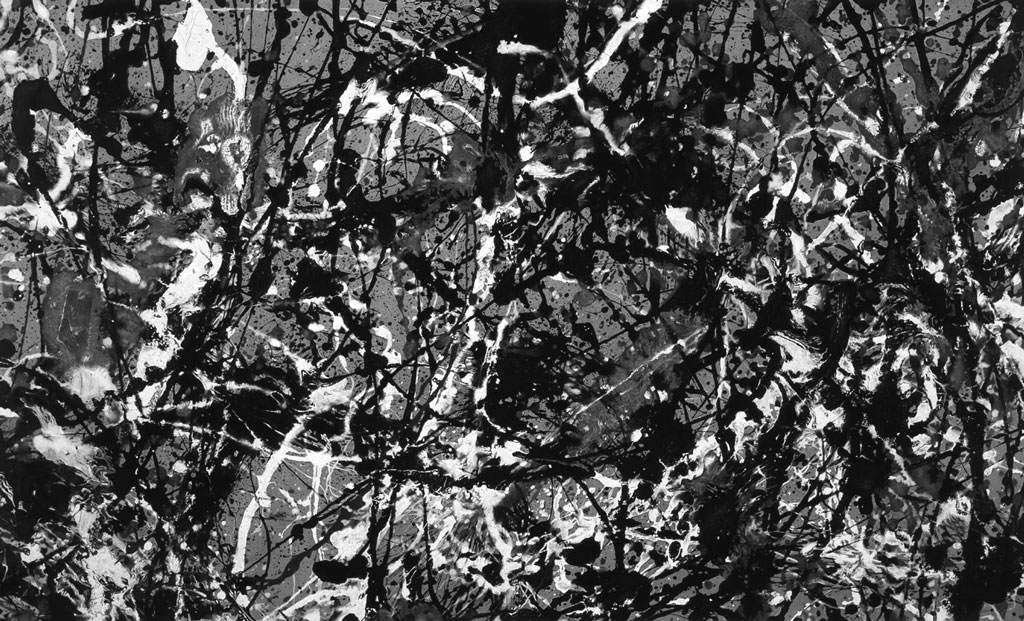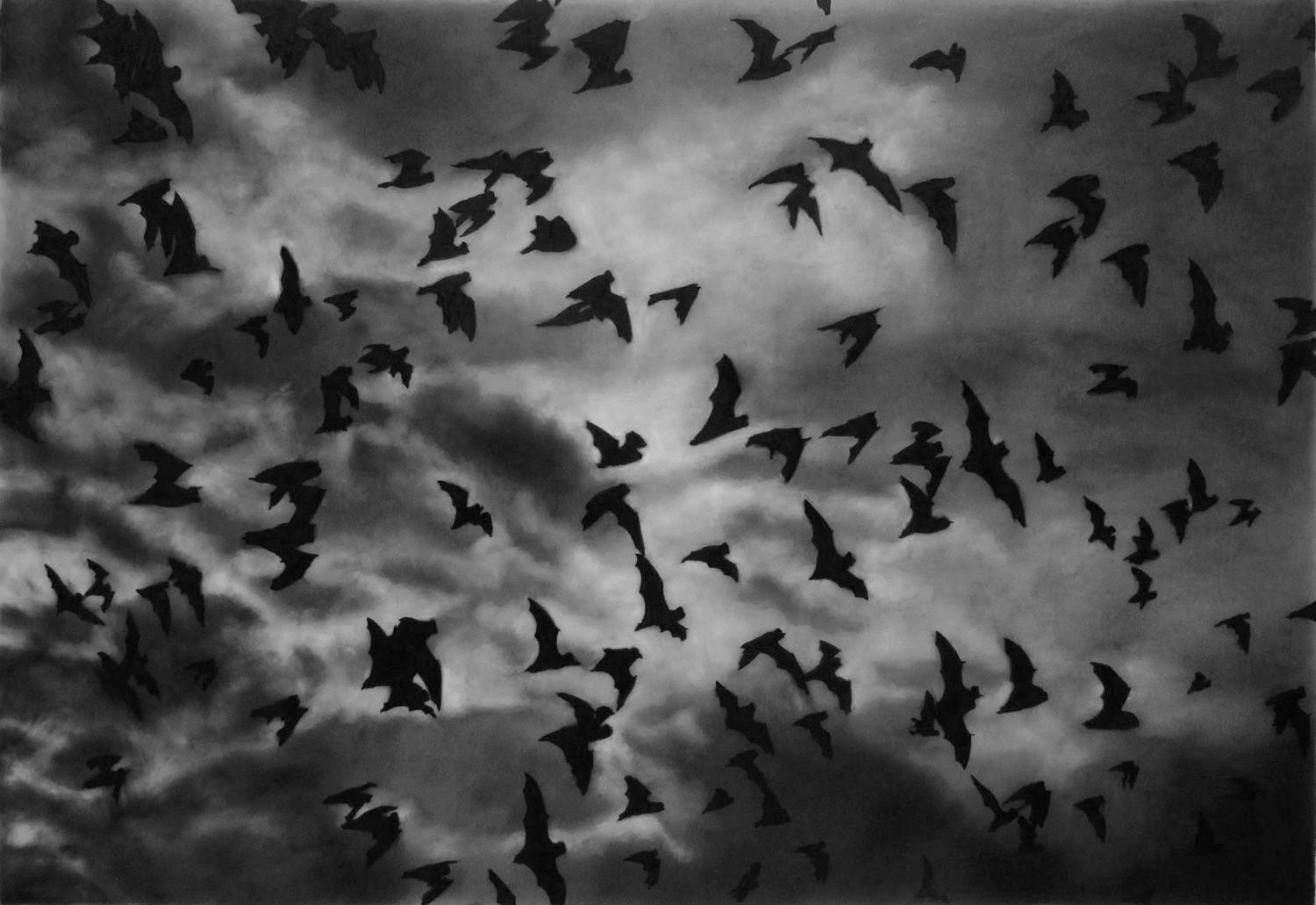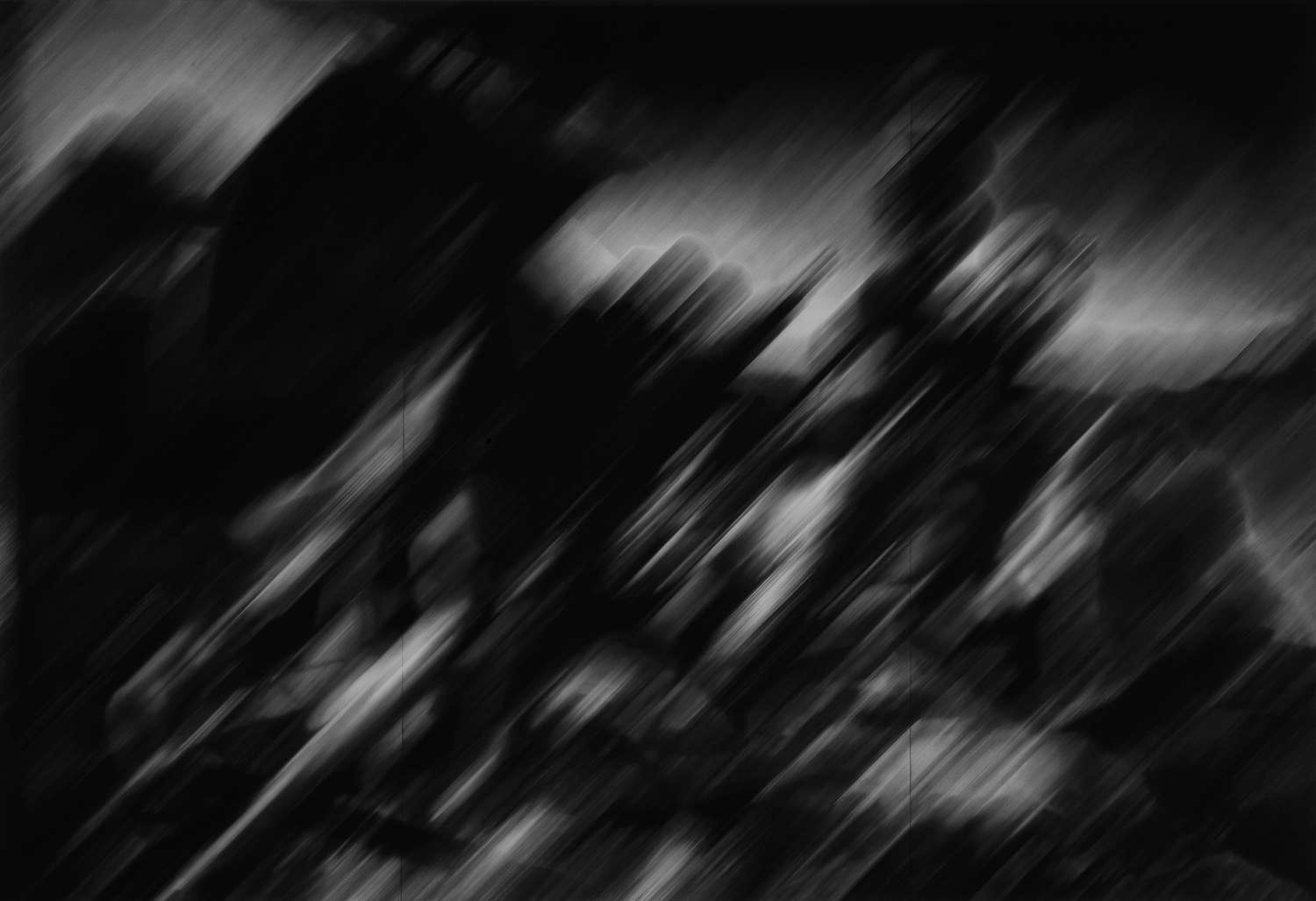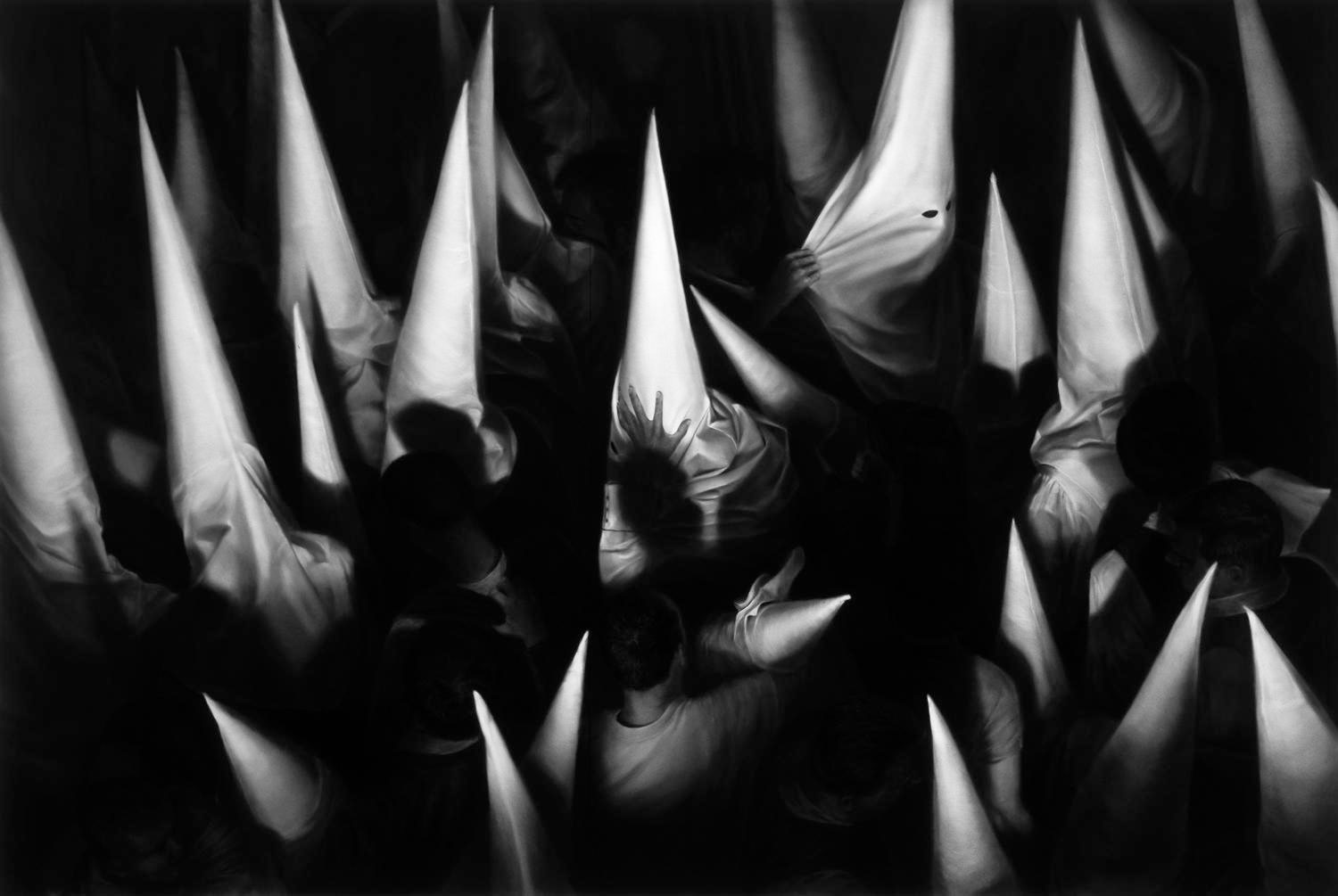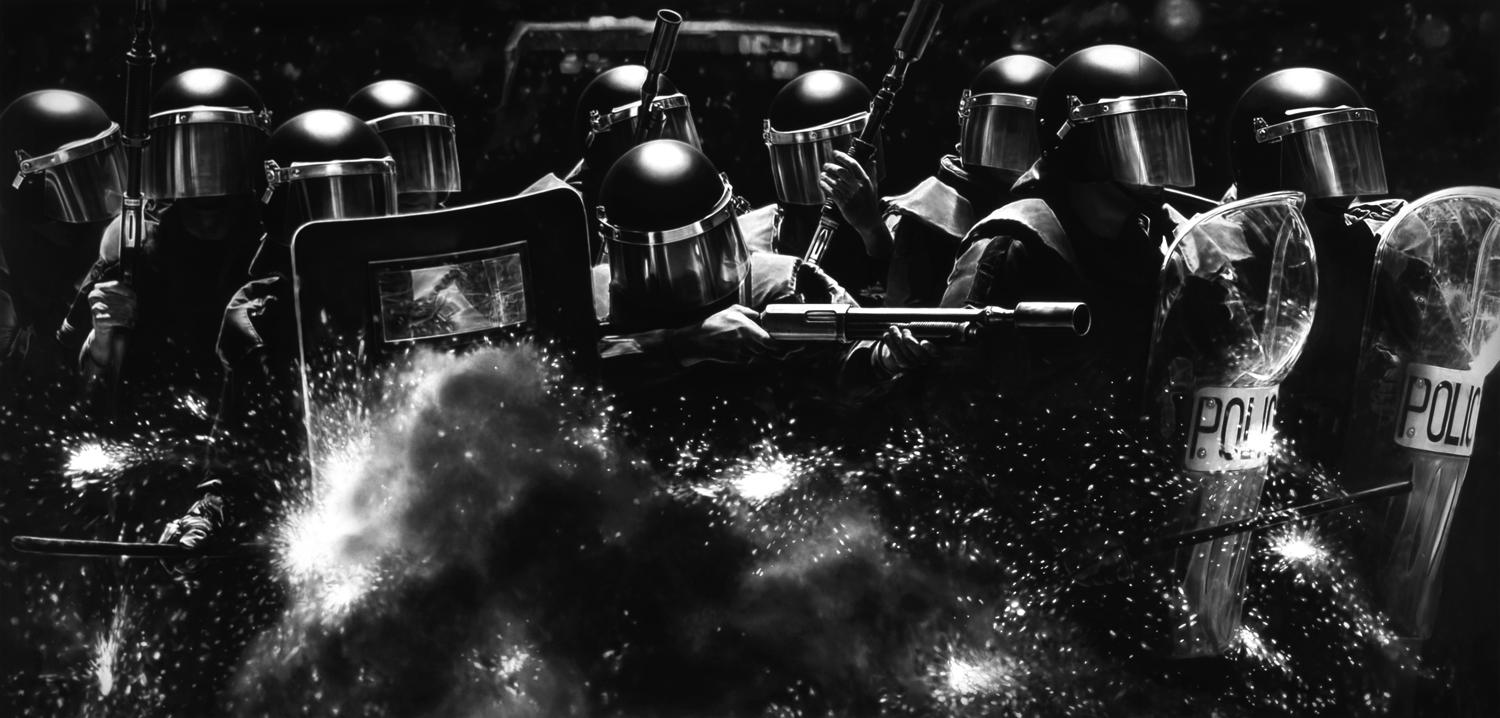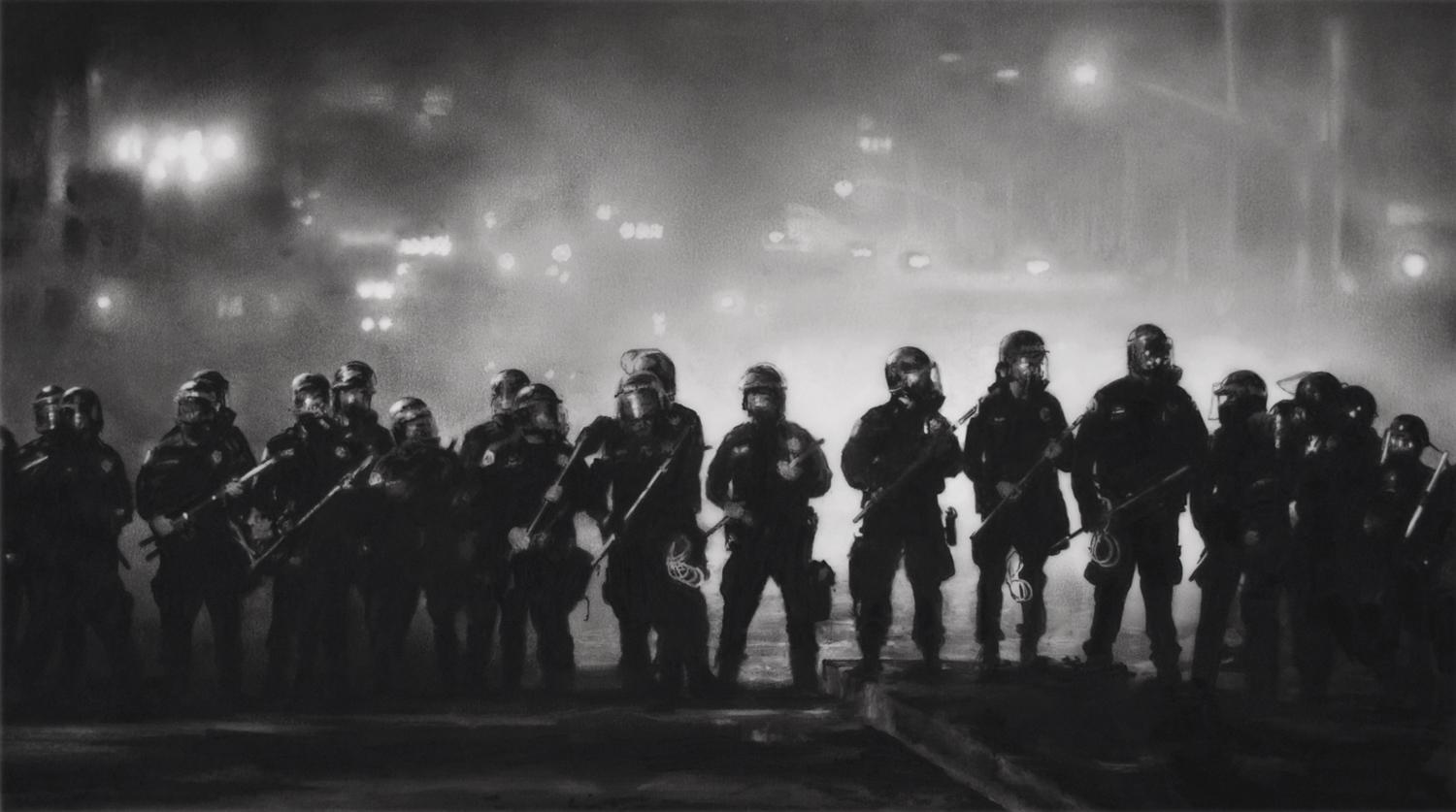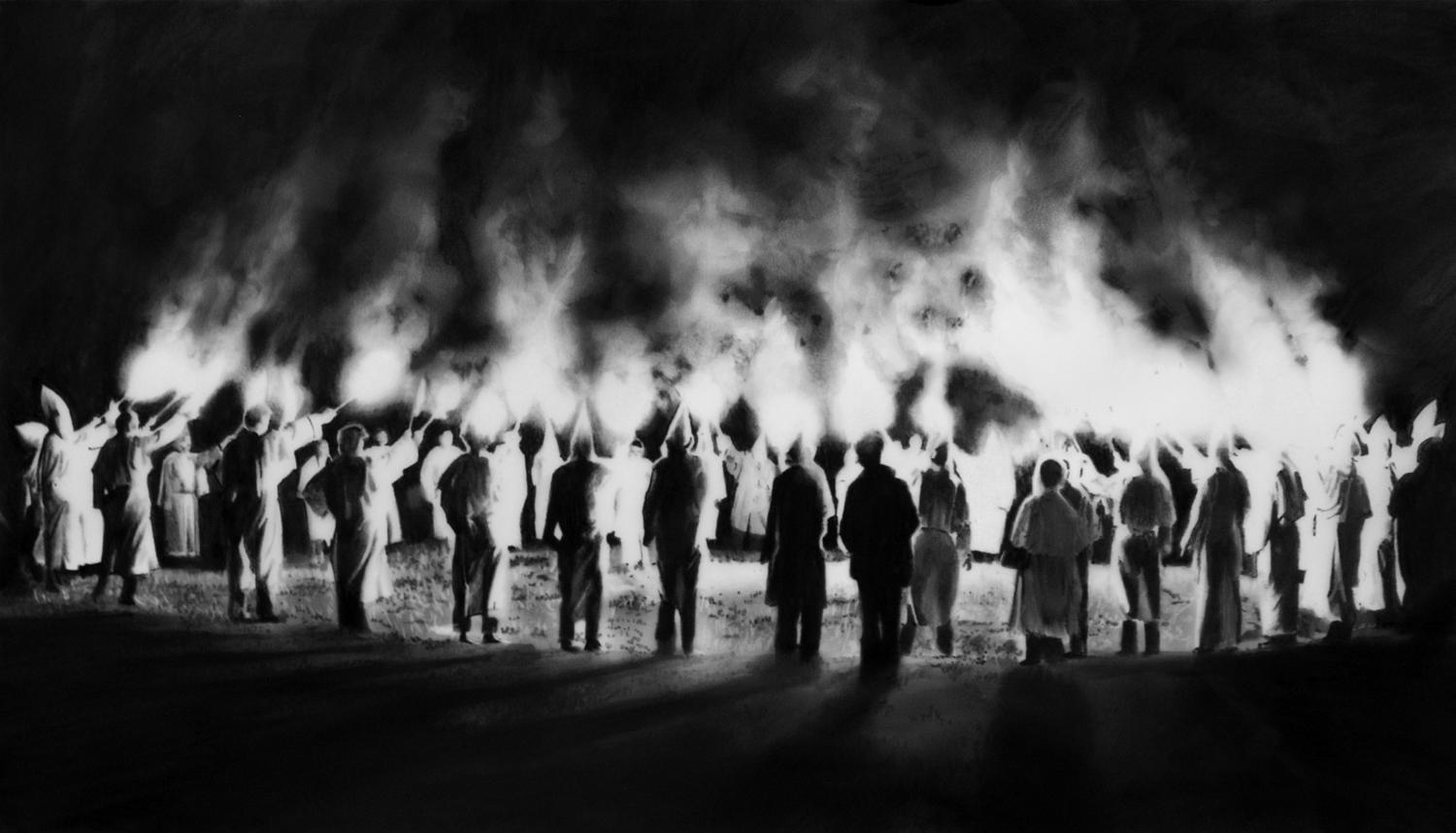ART-PRESENTATION: Robert Longo-When Heaven and Hell Change Places
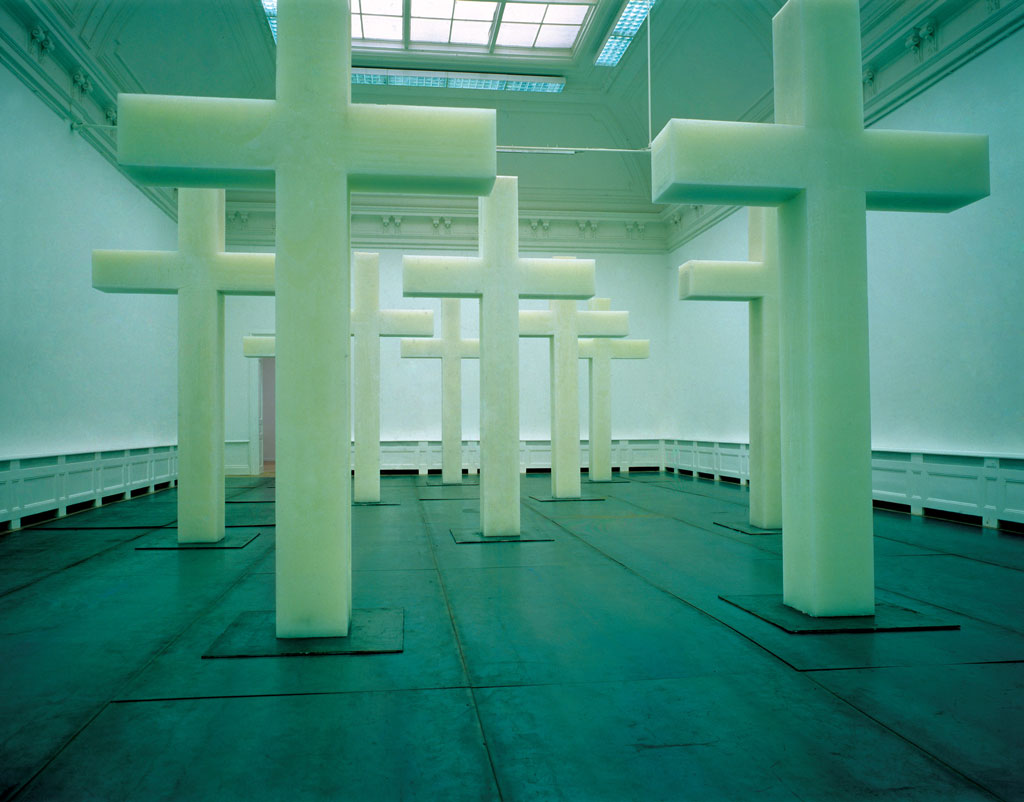 Since the 1980s, Robert Longo has created work across media including drawing, photography, painting, sculpture, music, performance, and film. Using a vast vocabulary of source images culled from the mainstream media, as well as from historical and art historical references, Longo’s work strikes a balance between the very personal and the socially charged.
Since the 1980s, Robert Longo has created work across media including drawing, photography, painting, sculpture, music, performance, and film. Using a vast vocabulary of source images culled from the mainstream media, as well as from historical and art historical references, Longo’s work strikes a balance between the very personal and the socially charged.
By Dimitris Lempesis
Photo: Hall Art Foundation Archive
For Robert Longo, art is a political act and represents a way to understand and to question the world around us. Organized in collaboration with the artist and including several large-scale charcoal drawings, a cast aluminum “Combine” relief, twenty-one studies, three “Heritage Drawings”, and a historic and monumental sculpture installation, the survey exhibition “When Heaven and Hell Change Places” brings together approximately 35 works spanning nearly 40 years of the artist’s career. Longo’s historic work, “When Heaven and Hell Change Places” (1992), consists of 7 monumental cross-shaped steel molds, each nearly 4 meters tall, alongside 7 identically sized luminous white casts. The work was first presented in 1992 and consisted of 30 cast wax crosses. Since then it has been presented in various formats. The original 7 steel molds included in this exhibition were exhibited at the 1997 Venice Biennale and still contain the remains of 7 wax crosses. Installed this summer along Schloss Derneburg’s central courtyard and adjoining cloister, this is the first public presentation of this major installation in over twenty years. Longo’s chosen title for the sculpture is based on his reaction to the devastating war in Bosnia that began the same year. Longo’s breakthrough work was a series of large-format charcoal and graphite drawings made in the early 1980s titled “Men in the Cities”. Set against blank backdrops, works like “Untitled (Gretchen)” (1980) and “Untitled (Eric)” (1981) feature women and men dressed in sober contemporary business attire, their bodies set in contorted poses, and presented in arrested motion. An early idea to show these drawings in groups led to Longo’s series of “Combines”, three-dimensional, large-scale, mixed media works from 1982–88. One of Longo’s Combines included in the exhibition is “Corporate Wars” (1982), a cast aluminum relief in which the individually contorted figures collide and burst out of the picture plane. Inspired both by the frantic action on the floor of Wall Street’s Stock Exchange and by Michaelangelo’s “Battle of the Centaurs”, works from this series exemplify Longo’s interest in urban tensions and anxieties. For over 20 years, Longo has continued his exploration of operatic themes through monumentally scaled charcoal drawings. Although the practice of drawing itself has traditionally been associated with an intimate scale, Longo’s meticulous process of rendering his imagery in an oversized, highly detailed and dramatic chiaroscuro charges his subject matter with emotion while transforming the medium of drawing to a monumental scale more commonly associated with painting. “Untitled (Exterior Street Door, Berggasse 19, Vienna 1938)” (2000) comes from a series titled “The Freud Cycle”. These drawings are based on photographs taken in 1938 of Sigmund Freud’s consultation room and apartment during the Nazi occupation of Vienna, just days before Freud fled Austria’s anschluss and relocated to London. Longo’s ominous depiction of the building’s front doors with a swastika at its center evokes both Vienna’s architectural and intellectual history, as well as the sinister Nazi presence during that period. Over the years, Longo has also engaged art historical references as the subject matter for his large-scale charcoal drawings. In “After Pollock (Detail of Autumn Rhythm: Number 30, 1950)” (2014), Longo’s minutely detailed and finely executed drawing of one of Pollock’s most well-known paintings puts his work into a dialogue with a major figure of Abstract Expressionism, while addressing the movement’s art historical importance and its influence on Longo’s own practice. “Untitled (X-Ray of Venus with a Mirror, 1555, After Titian)” (2016-17) is based on an x-ray image of the famous masterwork that reveals the “truth” underneath the surface of Titian’s original composition. In Longo’s most recent drawings, from a series titled “The Destroyer Cycle”, the artist considers recent world events, predominantly through the lens of American media, creating personalized visualizations of power, protest, futility, destruction, and aggression. “Untitled (Holy Week; Seville, Spain)” (2018) depicts a group of men, called nazarenos, clothed in the traditional white robes and capirotes (pointed hats of conical form) worn by certain brotherhoods during Holy Week processions in Seville, Spain. While the traditional costume was born from a desire to repent sins without revealing one’s identity, it bears a striking resemblance to the dress worn by the American white supremacist hate group, the Ku Klux Klan. In Longo’s moody depiction, the distinction is intentionally ambiguous. The 21 studies in this exhibition include a range of subjects, including a crashing wave, a procession of prisoners at Guantanamo Bay, landscapes, wildlife, rock stars, movie stars, sports heroes, riot cops, wall street protestors, etc. Each study reveals much about Longo’s process and is indicative of the kinds of images that make up and influence the artist’s visual vocabulary, forming the foundation and giving insight into his overall practice.
Info: Hall Art Foundation-Schloss Derneburg Museum, Schloßstraße 1, Holle by appointment only, at tours begin Visitor Center, Astenbeck 42, Holle, Duration: April-October 2019, www.hallartfoundation.org
